
How to go green for CO2 recovery
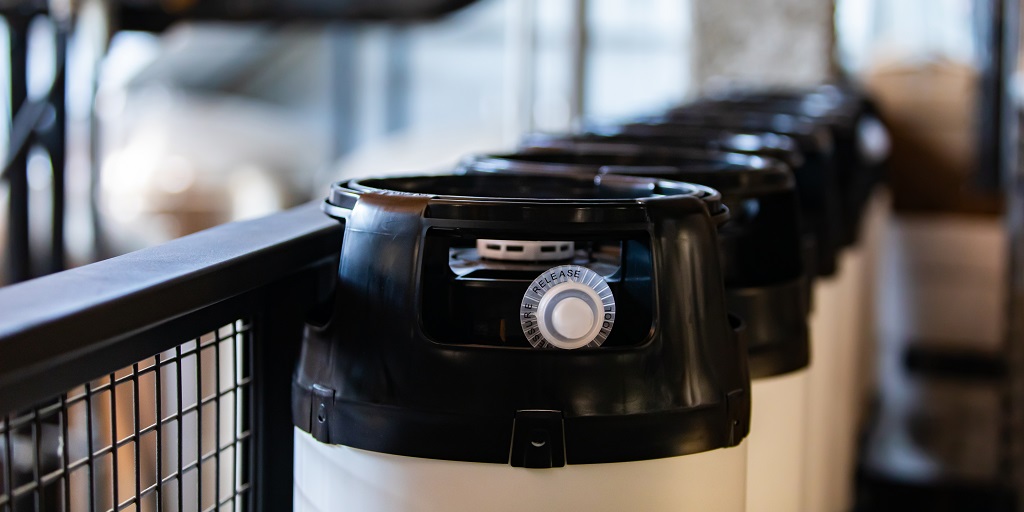
Brewers have long been aware of the irony of discharging CO2 produced in the fermentation process as waste, and then having to buy it to carbonate beers.
But with up to 15 grams of CO2 produced per pint of beer brewed, it’s an environmental challenge – as well as a financial and operational one – that all brewers should have on their radar.
Sydney brewery Young Henrys made headlines last month when it announced that it was using algae to capture its CO2 and reduce emissions, and brewers across Australia are looking at other ways to recycle, reduce and recapture CO2.
On a small scale, it’s been difficult to implement full CO2 recovery systems, which have been the province of bigger brewers with the funds to invest in technology with costs in the millions of dollars.
Now however, brewers are taking innovative steps to reuse the carbon dioxide emitted in the brewing process in a sustainable way, and are looking across the globe for small-scale systems and inspiration.
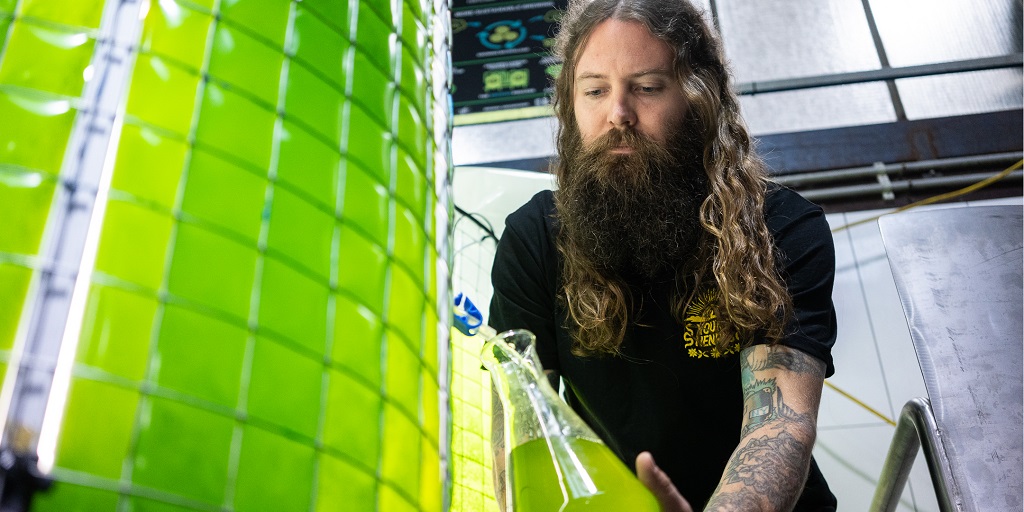
Young Henrys’ brewers are working with algae to reduce their CO2 emissions. Photo credit: Yeah Rad Creative.
CO2 recovery systems
CO2 recovery system or recovery plants are designed to recover CO2 from the fermentation process, requiring an intricate process of scrubbing, filtration and separation technology.
Earthly Labs is a US company based in Austin, Texas which specialises in “practical, scalable, affordable” carbon capture technology, something which is not yet available to smaller brewers.
Larger brewers like Lion have already invested in closed-loop CO2 recovery systems, but even they have issues to iron out in the system such as shortages or overabundance of CO2 depending on the manufacturing cycle.
The CO2 recovery process for a large brewery is also energy intensive due to the cooling and compression required, as well as bringing in additional plant and equipment to maintain and manage.
Earthly Labs founder and CEO Amy George told Brews News that part of Earthy Labs’ mission is to “miniaturise proven technology used by industrial giants” like Lion for small-scale carbon capture technology.
“[The aim] is to make it more accessible to small business owners and people like me trying to make a difference in the world my kids will inherit,” George explained.
Earthly Labs’ technology works similarly to that of larger brewers, capturing from fermentation and brite tank blow-off arms’ waste CO2 and purifying it to beverage grade, thus enabling its reuse or sale.
George explained that ease of installation and therefore affordability was key for small brewers.
“At Earthly Labs we have automated processes to reduce customisation, so instead of a custom-engineered solution, we offer standard sizes and CO2 capture rates. Finally, we focus on high-quality scrubbing and low energy-use design,” she said.
“We have different Earthly Labs CiCi unit models named after trees that are great at sequestering CO2.
“The Earthly Labs CiCi model is called Oak and can capture 100-150,000 pounds or more a year. It is largely deployed at breweries between 5-20,000 barrels however, we have had larger breweries want it to supplement use and we have smaller breweries with larger tanks implement it.”
The business will also be launching models for breweries below 5,000 barrels and another for larger breweries this year.
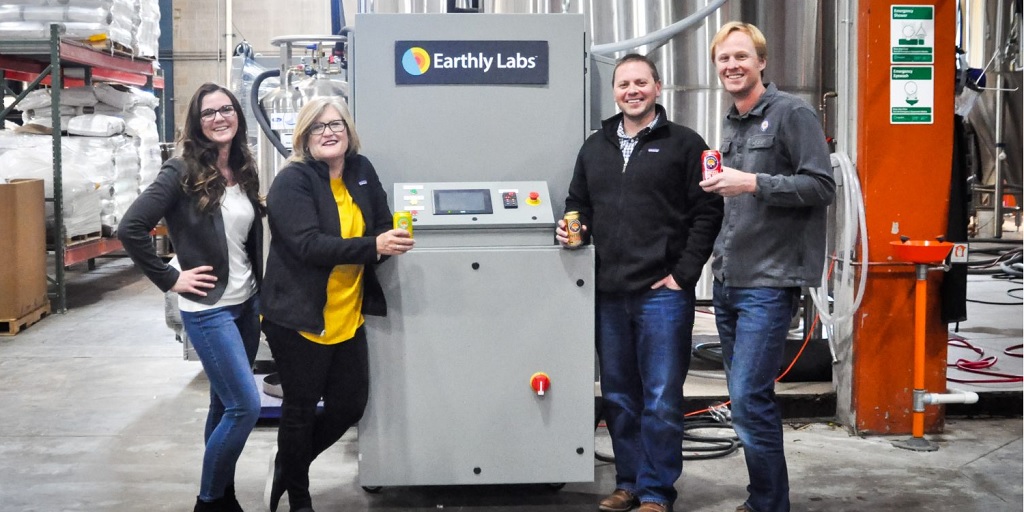
Earthly Labs’ CEO Amy George (second from the left) launches pilot with Denver Beer Co to capture CO2 for use in cannabis farms.
Cost-benefit analysis
Cost is a major barrier to entry for brewers looking at investing in small-scale CO2 recovery systems, and local CO2 prices will also affect the cost viability of a system, George explained.
“The cost of CO2 varies by region of the world; some craft breweries spend US$25,000 year on CO2 and storage and delivery fees and others US$200,000. Some would have payback in months, but most have a return in 2 to 3 years on their own CO2. If they can sell the excess then it is faster.”
Reusing CO2 in the brewery or selling it externally requires the CO2 to be tested and reach certain grades, in the brewery, food or beverage-grade, adding another layer of complexity to the process.
“In brewing, natural carbonation is seen to yield the highest quality beers. It stands to reason that the CO2 naturally produced as a waste byproduct is very pure.
“We do scrub it to 99.9 or 99.99 per cent purity to ensure beverage grade, so we have to get out the small amounts of hydrocarbons, acid gases, and other particulates that are left in there.
“We have validated this over the years with third-party ISBT quality tests. The unit uses a proprietary approach and real-time gas analysis on a second-to-second basis looking at gas purity to ensure we are producing quality gas.”
George explained that every brewery was a different case when it came to the amount of CO2 recovered.
“It varies by brewery depending on how much CO2 they use. Some consume seven times the next brewery so it is a big range,” she said.
“If they are efficient we can meet their needs and they have excess. This can be harvested and sold, increasing the return on investment to the brewery.
“We are working on a pilot now in Colorado where they are selling to the cannabis industry who uses CO2 for helping plants grow and working to enable other reuse applications.”
Earthly Labs carbon capture technology is currently available in the US, Mexico, and the business is currently certifying for Canada.
“We are looking at partners to help us certify and distribute in target markets worldwide. Given the sustainability mindset of many Australian brewers and climate goals of Australian government, we have had interest from Australia and are exploring that market,” CEO Amy George said.
Supplemental technology
Australian brewers are already coming up with innovative applications for excess CO2 while they wait for systems like those from Earthly Labs to become readily available and affordable.
Young Henrys’ algae project is one of a number of innovative solutions brewers are coming up with, and will supplement its long-term plans to systematically capture and reuse CO2, according to co-founder Richard Adamson.
“The idea was to look at CO2 recovery and capture technology, which is now getting to a stage where brewers could implement it, whereas before it was out of each for small brewers, it was way too expensive,” Adamson told Brews News.
“We’re looking at reusing the CO2 for the brewery function, but you produce more than you could ever use so letting some of that off and growing algae that we can then do something useful with as well.
“There is new carbon capture technology now that is available on a small scale that’s not hit in Australia yet.
“It’s something we’re looking at implementing as soon as we can get hold of it essentially, and then couple it with some of these bioreactors to grow the algae.”
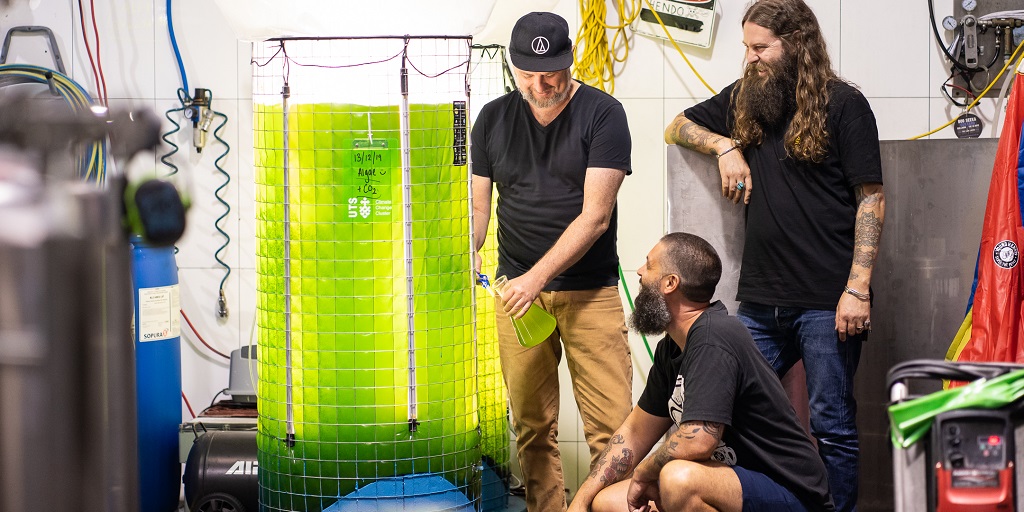
Photo credit: Yeah Rad Creative.
Whilst costs are always going to be an issue on the tight ship that is a brewery, Adamson explained that if they can get the systems in place it will be a financially viable solution too.
“We’ve done the maths on it and for us, with CO2 capture/recovery coupled with the bioreactor, we would pretty much be able to use all the CO2 we produce within the brewery and it would actually have a saving to us as we buy CO2 in, it would start paying itself back quite quickly.
“But we’ve still got a long way to go in terms of the research so I don’t want to get other brewers too pumped at the moment.
“As soon as we’ve got something that we think has a real world practical application we definitely want brewers to come on board and start doing it as well. The more of us that do it, the bigger impact we’ll have on reducing emissions.”
Symbiotic relationships
Adamson explained that a chance meeting with the University of Technology Sydney team who told him about the algae project got the cogs turning.
“We went back to the brewery and did some head scratching. It struck me that there’s almost an inverse relationship between microalgae and yeast,” he said.
“Yeast takes on oxygen and sugar and produces CO2, whereas algae takes in CO2 and produces oxygen and sugar through photosynthesis. It was fascinating.
“The brewers were like, you want us to do what? But their yeast husbandry skills have been transferred to growing algae.
“That was where I thought that growing algae as a way of capturing CO2 and growing something useful and something you could colocate in a brewing environment. A lot of the equipment and skills we already have, as well as that byproduct to accelerate growth.”
Dr Alex Thomson, who is part of the research team from UTS said that using algae for carbon capture is being used overseas already, but the Australian brewing industry is a special case.
“It’s a fantastic industry to work with because brewers are so aware of the carbon they use and produce, because it’s an industry that’s so conscious, they want to see what they can do about that.”
She said that the algae grown at Young Henrys is then brought back to the universities lab for testing.
“The CO2 is fed through filters and valves and given to the algae to consume. It’s all contained so we can contain those products as well.
“The algae is then taken back to the university, so then we ask how can we also use this waste product into something else? That’s the part we’re exploring at the moment.
“It’s exciting and that’s where there’s a lot of research to see those best applications and to make it even more climate friendly, make a product that would potentially replace something thats “bad” for the environment, so it’s got a net positive effect.”
She said the exploratory process at the moment was around finding uses for the algae, and everything from pigments and face creams to plastic, food and clothing was being explored. Even Kanye West bought into algae and launched a pair of Yeezys made with algae foam.
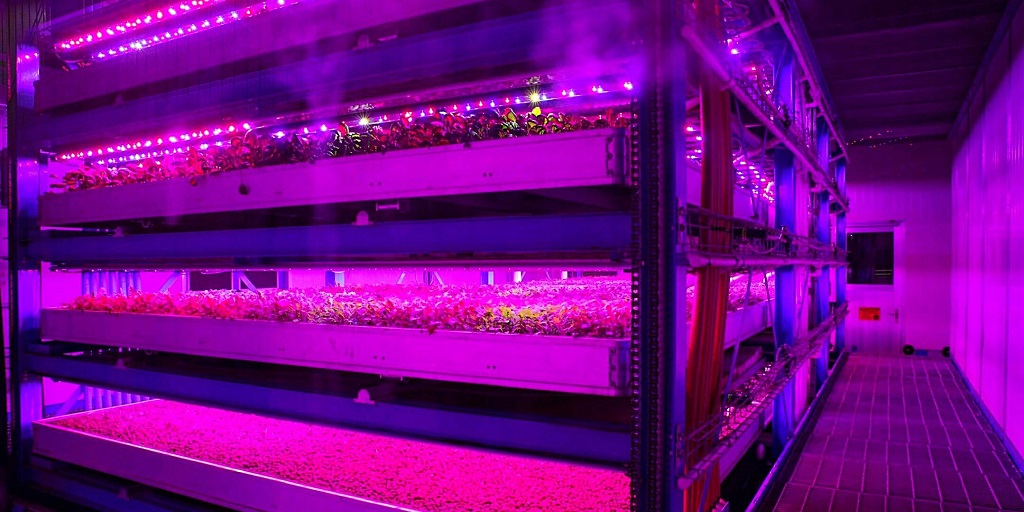
Terella Brewing Company’s on-site vertical farm systems
Another brewery which is looking at ways to reuse or recover CO2 in a responsible and useful way is Terella Brewing Co on the Sunshine Coast which was launched last year.
Co-founder Brandt Bamford said they are working on systems which allow the capture of CO2 emitted in the fermentation process to feed to the plants in the integrated vertical farm on site.
The Terella team has been setting up a system which will send the CO2 produced during fermentation out into pressure vessels, before piping it into the farm.
“We are hoping to switch over to our two large vessels to capture the CO2 at our fermentation pressure,” Bamford explained.
“We can’t keep a lot of CO2 really, these vessels equate to 5,000 litres of volume but kept at our fermenting pressure, that’s the max amount we can keep.
“Then from there, the vertical farm system is fully kitted out for the CO2 injections, there are precise CO2 dosing systems so it is pumped into the atmosphere in small quantities.
“Not only do they have CO2 monitoring but they have O2 monitoring as well for safety. It’s all linked so if an O2 monitor falls below a certain set percentage its shuts off the CO2 and vice versa.”
The plants only need small quantities and Terella is also limited by the fact it hasn’t got a system to suppress and contain the gas at that pressure yet.
“Obviously we don’t ferment all the time, there’s only a short window of CO2 production really, but they can’t use that amount of CO2 in that timeframe in the farm system.
“At this stage, we would be producing more CO2 than what we could put into the grow booth, purely because we don’t have the technology yet to compress it. Once these vessels reach 5,000 litres of CO2 at fermentation pressure, that’s it, it has to vent.
“Our end goal is to have a system in place that we can compress the CO2 and store on site to enable us to use the whole lot.”
Young Henrys’ Richard Adamson explained that brewers have a responsibility wherever they can to look at ways to create a more sustainable business.
“If we’re not going to do it, no one else is. That’s where we got to.
“We could wait for other people to solve the problem within our industry, but we’ve got to put our money where our mouth is. We’ve invested in some R&D that may never never give anything back in the long run, but at the very least contribute to the science behind it and on a positive side we could come up with some really cool solutions.”
Is your brewery undertaking a project to reduce or reuse CO2 in the brewery? Let us know clare@dev.brewsnews.com.au.



